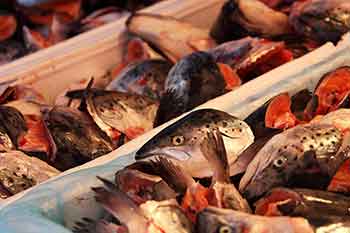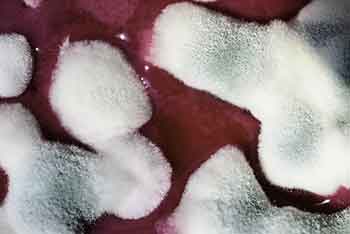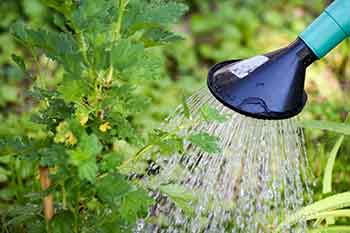Now, I hear this question a lot. Can dead fish be really used as fertilizer? Here is my answer:
One important nutrient that is needed by plants is nitrogen. And nitrogen is abundant in fish. If nitrogen can be properly extracted from the fish, then it would make for excellent fertilizer. The best way to extract nitrogen from fish is through a fish emulsion. Others may call it fish amino acid (FAA).
Before I share with you how to make the emulsion, here are some ideas on why you might want to make one.
Nitrogen is a Fertilizer for Plants
I have written about how important nitrogen is in my previous blogs. Every gardener, from beginner to expert, should know this. From the time a seed germinates, you have to feed it with nitrogen. This becomes very important when you have plants in pots. In a container or a pot, the area where the plant can eat nitrogen is very limited.
Plants need 3 important nutrients. These are nitrogen, phosphorus, and potassium. Phosphorus is needed for root development while potassium is needed in the flowering or fruiting stage of the plant.
One important nutrient that a plant must have is nitrogen. Nitrogen is needed in the plant’s vegetative stage. This is the stage where plants vigorously grow leaves and shoots.
Nitrogen is needed by plants to produce chlorophyll, which makes the leaves green.
Chlorophyll, which is a green pigment, is present in all green plants and is responsible for the absorption of light to provide energy for photosynthesis. Without photosynthesis, they can’t make their own food so they eventually die.
Can I Bury Dead Fish in the Garden?
For a fish to become a nitrogen-rich fertilizer, it has to be broken down first. Others often ask, “Can I bury my fish in the garden?” Well, my take on this question is no, you shouldn’t bury a dead fish in your garden. Don’t even think about burying it under a patio pot.
The general idea is when fish is buried, it will decompose and become compost which the plants can eat. It will indeed decompose, but for how long? In the time it takes for the fish to decompose, the stench will be detected already by all sorts of insects, pests, and even rodents.
You do not want them to dig into your garden and eat your fish. If this happens on a potted plant, the pests may eat into the plant’s roots. Plus, the stench of decaying fish meat is not that nice.
Since your ultimate goal is for the plant to absorb nitrogen from the fish, the question you should be asking is “How can I extract the nitrogen from dead fish?”
Fish Guts is Rich in Nitrogen
If you have lots of plants in your garden, balcony, patio, or wherever you put your plants, then it might be time to consider all those fish guts you throw away when you buy fish. If you’re not cooking the fish head, you can use it also as a fertilizer. It is better to use the soft flesh in the guts because it will break down faster.
You can a variety of fish such as tuna, salmon, herring, it really doesn’t matter. Remember, you don’t have to use the whole fish. Fish trimmings will do, guts, gills, and all.
If you’re really serious about it, and if you have the guts to do it, you can ask for fish scraps and trimmings from your supermarket! They will be happy to give you the guts, at least, that’s what I think. I tried to ask for it once at a local wet market and they were just happy to let it go. For free.
Converting Fish Guts to Liquid Fertilizer
Our end product is a liquid fertilizer that we can use to water or drench our plants. And this liquid fertilizer could last for up to a year! To achieve this, we have to use beneficial microorganisms to break down and extract the nitrogen from the fish.
This could be done through a process called fermentation.
Don’t worry, this process is just easy. You don’t have to be in a chemical laboratory to make. The liquid produced in the fermentation process is called fish emulsion. You only need 2 main ingredients to make the emulsion, fish guts and molasses. If you don’t have molasses, brown sugar is a good substitute.
Molasses is an Energy Source for Beneficial Microorganisms
I have mentioned beneficial microorganisms and they are responsible for breaking down organic matter. They are found almost everywhere, especially in the soil. So basically, we give these microbes a source of energy for them to break down organic, nutrient-rich materials.
Feeding them with molasses will speed up the nitrogen extraction process by enabling them to reproduce at a faster rate. If done correctly, the liquid fertilizer will be ready in a month.
If you really want results fast, there are microorganism activated solutions available commercially. With these solutions, you can have an effective fertilizer in 2 weeks.
Brown Sugar is a Substitute for Molasses
In case you can’t find molasses in your kitchen or your local supermarket, you may use brown sugar instead. To put it simply, brown sugar is just white sugar mixed with molasses. Don’t use white sugar.
White sugar is already processed or refined, wherein molasses has been removed already. When brown sugar melts, you have molasses.
Fish Emulsion Procedure

Let me share with you how I make my fish emulsion. Others may have a slightly different method, but this is what I am doing and it just works. This may also be called fish amino acid in some regions. I also made a blog about fermented plant and fruit fertilizer using molasses. You can check it out here.
Step 1
Gather all the fish guts in a clean container. You may include the fish heads. Rinsing it with running water will do. The last thing we want is for maggots to appear because the fish guts were not cleaned. To be on the safe side, it is best to use fresh fish parts.
This ensures that flies and other insects have no time to lay their eggs on the fish flesh.
Step 2
Slice the fish parts into small pieces using a sharp knife. Alternatively, you can use a food processor or blender to achieve a finer texture. The smaller the fish parts, the faster the fermentation process. If you don’t have the equipment, small thin slices will do.
Step 3
Transfer the sliced, chopped, or blended fish guts to a separate container. I would advise using a bigger container with a wide mouth since this is where we mix our concoction. Be sure also that it can be sealed with a lid.
Step 4
Add in the molasses. The proper ratio is 1:1. For example, for every 1 kilogram of fish, add 1 kilogram of molasses. Again, if you don’t have molasses, you may use brown sugar. Mix thoroughly.
Step 5
Seal the container tightly. We want to have an anaerobic fermentation process. Meaning, the entire process will not involve air. We also need to seal it so that flies and insects cannot lay their eggs in our concoction
Step 6
Store in a cool, shaded area, away from direct sunlight. Make sure to open the container and mix your concoction every other day. The microbes in the concoction release gases during the fermentation process. Pressure will build up if you do not let the gasses out.
You don’t want the container to explode. Mixing the concoction is also important so that organic matter is broken down uniformly.
That’s it. For best results, you need to give the fermentation process a month to produce a potent nitrogen-rich fertilizer. Although, in 2 weeks you will already see that it has liquefied already.
Why are There Molds in my Emulsion?

The presence of molds is perfectly normal. You just have to make sure that the color of the mold is white or yellow and that it doesn’t have a foul odor. If it has a dark color, brown, black, or green, then bad bacteria has taken over. Contaminants may have been introduced during the procedure.
In this case, the fermentation process failed. Discard the entire concoction and start again. If the molds are white or yellow, just mix them slowly until the molds disappear.
“What if there are maggots?” It’s ok. Just mix the concoction and seal the container tightly. The maggots will die eventually and they will be broken down by the microbes.
Harvesting the Fish Emulsion
After a month, you are now ready to harvest your liquid fertilizer. You will know if the process was successful just by its smell. Make sure it doesn’t have a foul smell to it.
To harvest your fish emulsion fertilizer, simply filter out the remaining solid particles. You may use a cloth or a strainer and transfer all the liquid to a clean container. The remaining solid particles can be added to your compost.
If you don’t have one, simply sprinkle them on the soil around the plant. This process is called topdressing. Because molasses is a natural preservative, you can use this fertilizer for up to a year. Just make sure to keep it in a clean container to avoid contaminants.
Also, remember that the fermentation process may still be ongoing. Don’t try to close the lid tightly because the microbes may still be releasing gasses that could build up pressure inside the container.
It is good to open the lid maybe twice a week. Always store it in a cool, dry place. I just keep it under the sink.
Since molasses is a natural preservative, you can keep this fertilizer for up to a year.
How to Apply the Fish Emulsion Fertilizer
The best way to apply the fish fertilizer to your plants is to drench or water your plants with it.

The proper ratio is 20 ml of fish emulsion fertilizer per 1 liter of water. This is roughly 2 tablespoons per liter of water. Mix thoroughly before drenching. Drench your plants twice a week. The fish emulsion fertilizer or fish amino acid is rich in nitrogen so it is best to use it in the vegetative stage of the plants, or the stage when it is focused on producing leaves.
Do not use this fertilizer to spray your plants. The fish emulsion contains oil. The oil may stick to the leaves which causes them to burn under the sun. The oil also covers the stomata which may hinder nutrient absorption and air circulation.
Fish emulsion is best used to fertilize plants from its seedling stage until just before it goes into its flowering or fruiting stage.










